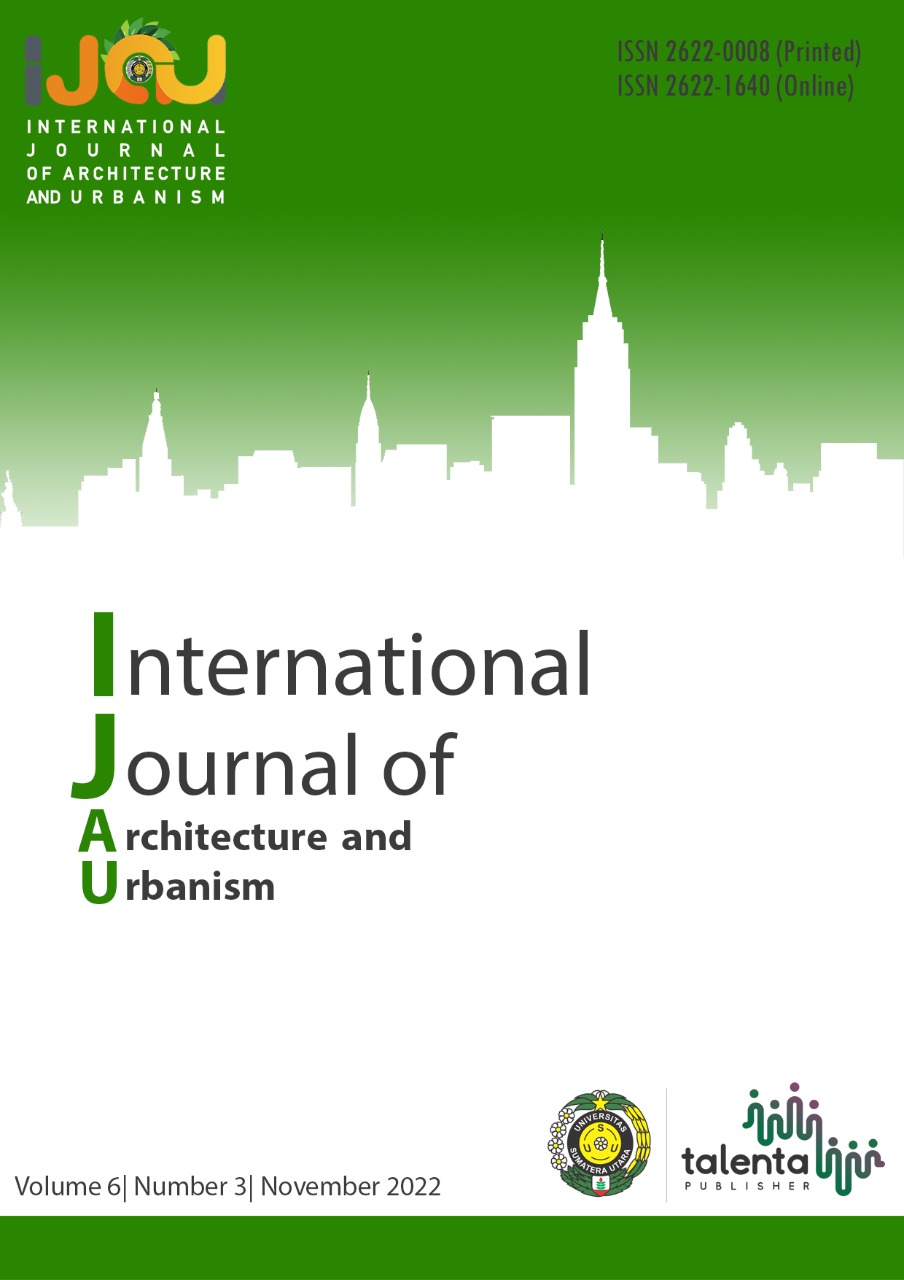The Effect of Orientation and Material On Thermal Comfort In Museum Perkebunan Indonesia Building
DOI:
https://doi.org/10.32734/ijau.v6i3.10392Keywords:
material, museum, orientation, thermal comfortAbstract
Thermal comfort is something that must be considered in a building to create comfort for its users. One of the factors that influence thermal conditions is the orientation of the building towards the sun and building materials. The Museum Perkebunan Indonesia is one of the famous and oldest museums in Medan, Indonesia. Besides that, the museum still has the dutch colonial architecture style, which is mostly known as a building with good air circulation because of the amount of ventilation and window they have. Based on that, this study aims to measure the thermal comfort of each room with a different orientation in Museum Perkebunan Indonesia and then to examine the effect of thermal comfort in Museum Perkebunan Indonesia. Moreover, the study also discusses the material used in Museum Perkebunan Indonesia building. The methodology of this study is qualitative-descriptive by solving the existing problems based on quantitative data that is done by the measurement of air temperature that was carried out for six different days, starting from morning to evening. Furthermore, the study also analyses and describes the object research. The analysis itself shows that the orientation effect has a significant effect compared to the influence of building materials on the museum building. And the result of the analysis shows that Museum Perkebunan Indonesia Building falls into the uncomfortable category according to the Standard Procedure for Planning Energy Conservation in Buildings.Downloads
Download data is not yet available.
Downloads
Published
2022-12-08
How to Cite
Novrial, & Lubis, R. N. . (2022). The Effect of Orientation and Material On Thermal Comfort In Museum Perkebunan Indonesia Building. International Journal of Architecture and Urbanism, 6(3), 311–318. https://doi.org/10.32734/ijau.v6i3.10392
Issue
Section
Artikel
License
Copyright (c) 2022 International Journal of Architecture and Urbanism

This work is licensed under a Creative Commons Attribution-ShareAlike 4.0 International License.


.png)










